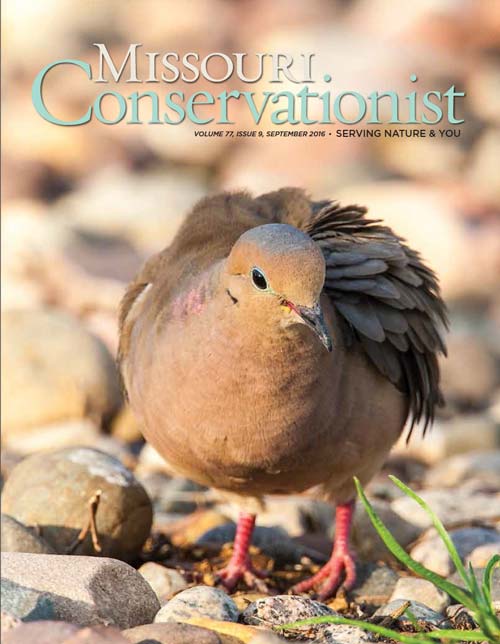Susan Haskins had already been in the woods five hours before the doe entered the clearing 100 yards from her blind in the Shaw Nature Reserve, located southwest of St. Louis. She saw it first, before locating it again through the scope of her rifle. The adrenaline pumping through her body made her heart race and hands shake.
“I took aim, but I was really shaking,” Haskinssaid. “I took my first shot, and I was low.”
“Breathe,” came the voice from over her shoulder.It was the voice of Greg Caldwell, a volunteer with the Missouri Department of Conservation,and on this morning, her hunting mentor.
With Caldwell’s calm guidance, Haskins regrouped and fired again. Anticipation turned to excitement this time as the doe fell, and Haskins shared the experience of hunters throughout the ages — her first successful harvest.
What makes Haskins’ experience different from the vast majority of those who came before her is only two years earlier, on the eve of her 50th birthday, the daycare provider from Fenton picked up a firearm for the first time.
Needing a respite from caring for the children of her day care and for her husband, Don, who had been diagnosed with cancer, Haskins found her release in the form of a firearms safety class held at the Missouri Department of Conservation’s Jay Henges Shooting Range and Outdoor Education Center, located in southwest St. Louis County.
“I always wanted to shoot a gun but was too afraid, too scared,” she said. “We never had guns in our home, and I was raised in a family where we never had guns, and I thought, you know what, I’m just going to go try it.”
And thus began her journey from outdoor enthusiast to accomplished hunter. Her firearms safety course led to a trapshooting course at the August A. Busch Memorial Conservation Area in St. Charles.
“The first year I just took classes, just trying to find out more because I was still really nervous,” she said. “Hunting was definitely not on my radar at first.” But with time and experience, hunting found its way onto the radar.
“The more I met and talked to people and got excited about shooting the gun, I felt more confident that maybe I could hunt,” she said.
Her first attempt, a Department of Conservation guided hunt for women in 2008, did not result in a successful harvest. Another hunter’s last-minute cancellation put her back in the blind in 2009 — again with Caldwell as her guide. This second attempt was more successful.
Getting a Late Start With Hunting
For the majority of Missouri’s hunters, hunting is a family tradition, passed from generation to generation. But some, like Haskins, are finding their way to the tree stand or blind later in life, and without the benefit of family experience to guide them. What motivates people to take up hunting at this stage varies, said Kyle Lairmore, the Department’s hunter education and shooting range coordinator, but several common themes have emerged.
“It could be a social thing,” Lairmore said. “You may have grown up in the city, but your job or family takes you to an area where hunting is more prevalent.”
Spending time with new neighbors, friends, or coworkers motivates some to give hunting a try. Regardless of the results, hours in the outdoors with others can help form bonds, he said.
“Success is not necessarily measured in a harvest,” he said. “Success can be being in nature and enjoying it with family and friends.”
While she did not begin hunting as a social outlet, Haskins found an instant camaraderie with fellow shooters, then with fellow hunters.
“Everyone wants to hear your story,” she said. “Everybody wants to know what was your first hunt like. They’re so open to listen and share.
“I’ve had great friendships evolve from it, and continue to have those same friendships today.”
Some women want to share the hunting experience with their husband or boyfriend, who are established hunters. Still other first-timers are parents who were raised without the hunting tradition, but recognize the benefits that come with spending time in the outdoors hunting and want to start a tradition for their children.
A growing number of first-time adult hunters fall into the category of locavores — people whose diets consist only of, or primarily of, locally grown or produced food, Lairmore said. For some, this includes seeking out a source of local, healthy, and sustainable meat.
“Their feeling is I want to harvest my own food and know where it came from,” he said.
Where to Hunt
Susan Haskins harvested her first deer at the Shaw Nature Reserve, one of many managed hunts throughout the state. The Department organizes more than 100 managed hunts statewide on sites that range in size from the 670-acre Gallatin Conservation Area in northwest Missouri to the 6,987-acre August A. Busch Memorial Conservation Area in St. Charles County.
Hunting at a conservation area or other Department-managed site requires a bit of homework, said Kyle Lairmore, hunter education and shooting range coordinator for the Missouri Department of Conservation.
“Every one of them is a little different, too,” Lairmore said. “Some of them will be archery only, some of them will be muzzleloaders, some of them will be bucks only.
“It’s the hunter’s responsibility to educate themselves on where they’re going.”
The best first step in researching a Department-managed site is a visit to the Department’s website, mdc.mo.gov. From the website, a hunter can search conservation areas by region, species, or season, he said.
“Once you pick a conservation area, you have links to the brochure, which has more details for that specific area, plus maps,” he said. “You can print out the map and know where you’re going, know the parking lots, the terrain, and topography.”
Despite nearly 1 million acres open to hunting at Department sites, more than 93 percent of land in Missouri is privately owned, so far more opportunities exist for hunting on private property.
It is important to remember that a hunting permit does not allow someone to hunt on private property without permission. The Department recommends several steps that can help a hunter secure permission from a private landowner:
- Make an appointment to meet the property owner face-to-face. This approach is much more personal than a phone call and will give the landowner an opportunity to learn about you before giving permission to hunt his land.
- Prepare for the landowner meeting like a job interview. The landowner will make his decision based on your appearance, attitude, and actions, just like a perspective employer. Making a good first impression is important.
- Do not rush through the first meeting with the landowner. Allow time to have a casual conversation, including special rules or conditions of using the property. “The main thing is be respectful and give them a good impression of what a true, ethical hunter is,” Lairmore said.
For more tips on hunting on private land, visit the Department’s website at short.mdc.mo.gov/ZZa.
From Backyard to Backwoods
Regardless of age, the path from backyard to backwoods typically begins with hunter education — first the knowledge portion, followed by hands-on firearms safety.
“The knowledge portion covers most of the legal aspects, the ethical aspects, and basic firearm safety,” Lairmore said. It can be completed online, through selfstudy, or by attending a four-hour class.
The knowledge portion must be completed before a student can sign up for the skills session.
The skills session, which typically lasts a maximum of four hours, includes hands-on firearm safety, muzzle control, safe firearm carries, crossing of obstacles, and tree stand safety. Department staff and volunteer hunter safety instructors, of which there are more than 1,000 across the state, teach these courses. For more information, including the dates and locations of skills courses, visit short.mdc.mo.gov/ZkY.
The time it takes to complete hunter safety may be a hindrance for someone who wants to try hunting, but is unsure if they want to commit to the sport. For those people, the Department offers an Apprentice Hunter Program.
Those involved in the program are allowed to hunt alongside permitted adult hunters for two years before they are required to get a standard hunting permit.
“They get to learn, and they get to go with someone to see if they like it,” Lairmore said. “If they do, then they can go through the hunter education program and get their permit.”
The Department offers a number of other classes and events, frequently free of charge or for a nominal fee, designed to sharpen a new hunter’s skills.
Aside from the Henges Range where Haskins took her first classes, the Department has four other fully staffed ranges in the St. Louis, Kansas City, and Springfield areas.
These sites regularly host a variety of shooting instruction opportunities. In addition to the staffed ranges, 70 of the Department’s conservation areas throughout the state include unstaffed shooting ranges. For more information, visit short.mdc.mo.gov/ZZb.
Choosing Your Game
Many begin hunting with their game already in mind, but those who don’t have a wide variety of game from which to choose.
Haskins’ first hunt was for deer, which, according to Lairmore, is pretty common. Deer and turkey are the two most popular game species, he said, but new hunters may want to think smaller.
“Squirrels and rabbits are plentiful, easier to handle, and the seasons are longer,” he said. “It’s an underutilized resource right now.”
Hunting small game also does not require long hours in a blind or tree stand, and could be more suitable for those who prefer to be up and about. The gear associated with small game hunting is also more financially accessible for those new to the sport.
“You can get into hunting at a reasonable cost,” he said.
Keeping the startup costs down as she began shooting and hunting was important to her, Haskins said.
“That was a big key for me, and is still a big key when I talk to people,” she said.
That included attending those first classes with a borrowed firearm.
“I borrowed it from a friend of ours who’s a hunter, and he has boys who all hunt,” she said. “So when I told him I was going to try it, he said, ‘I have the gun for you to borrow.’
“That sort of investment sometimes you can’t jump into,” she said. “I tell people, you don’t have to spend a fortune getting into this. You can start off small and work your way up.”
Since that morning in 2009, Haskins has continued hunting, expanding her methods to include bowhunting, her game to include small game and turkey, and her hunting partners to include her husband, Don.
“My husband and I both hunt because I’ve pulled him into it with me. We are still very active hunters,” she said. “Any time there’s a season, we try to get out.”
Hunting Federally Managed Lands
In addition to Department of Conservation property, Missouri hunters have access to nearly 2 million acres of federally managed lands, including 1.4 million acres of the Mark Twain National Forest, which is overseen by the U.S. Forest Service. Information concerning hunting in the Mark Twain National Forest is available at fs.usda.gov/activity/mtnf/recreation/hunting.
Missouri is also home to nine national wildlife refuges, managed
by the U.S. Fish and Wildlife Service, representing more than 60,000
acres. Hunting opportunities vary depending on the refuge. For more information, visit fws.gov/refuges/hunting.
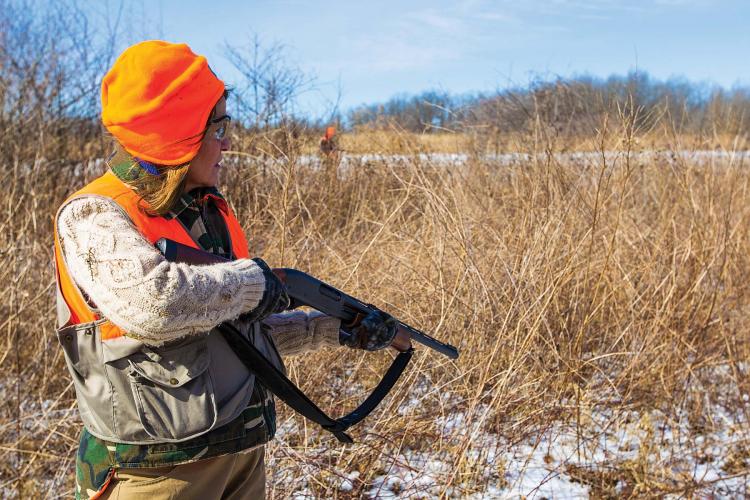
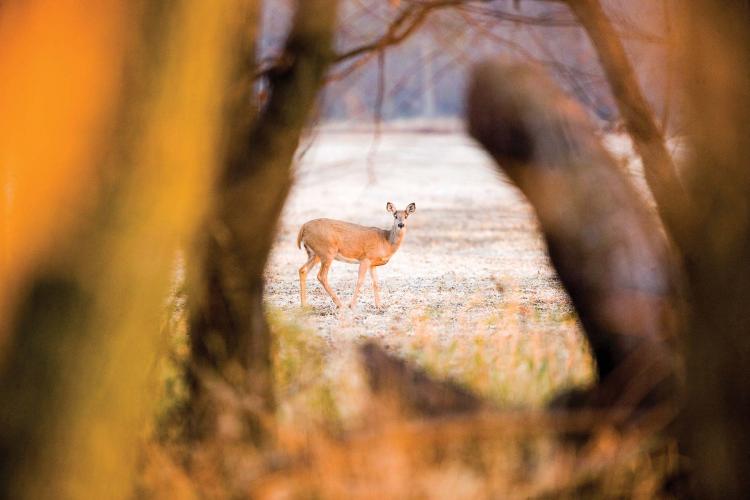
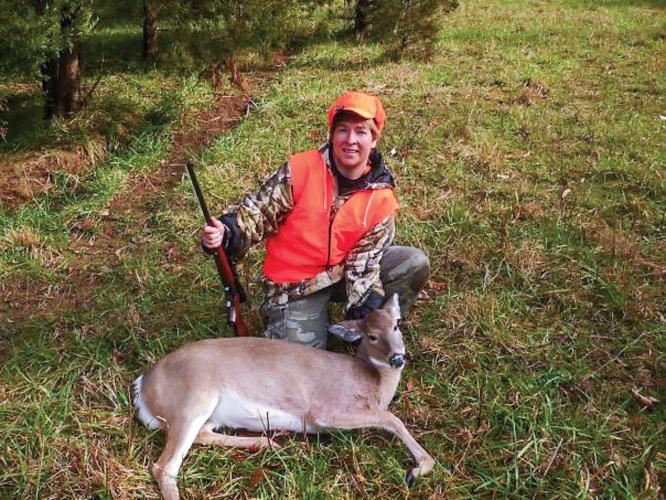
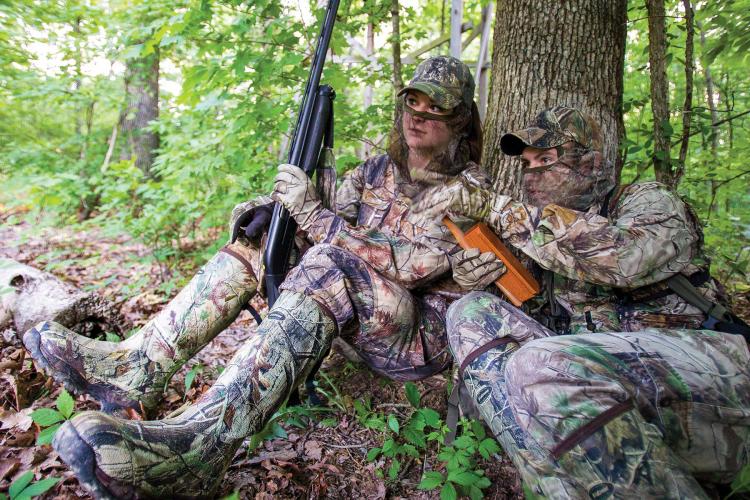

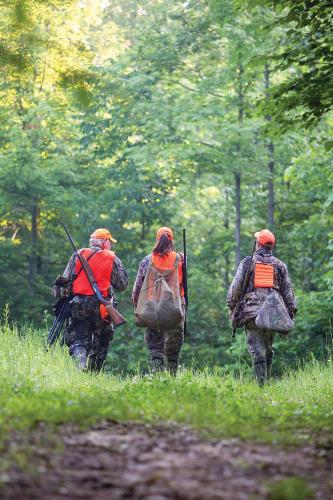
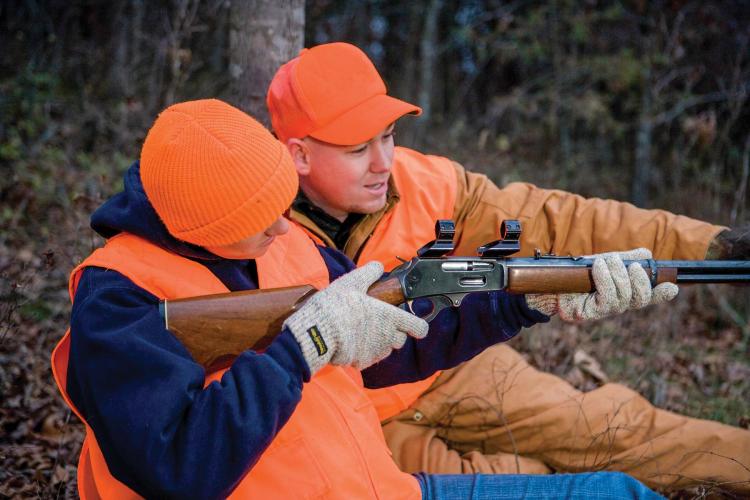


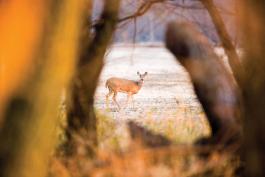
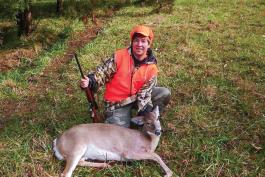
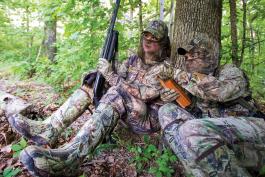


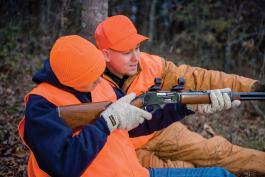

Also In This Issue
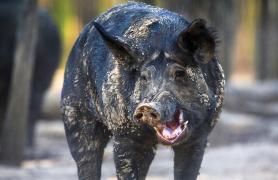
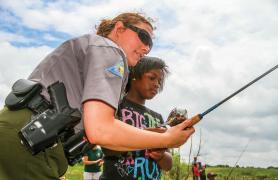
And More...
This Issue's Staff
Art Director - Cliff White
Associate Editor - Bonnie Chasteen
Staff Writer - Heather Feeler
Staff Writer - Kristie Hilgedick
Staff Writer - Joe Jerek
Photographer - Noppadol Paothong
Photographer - David Stonner
Designer - Les Fortenberry
Designer - Marci Porter
Designer - Stephanie Thurber
Circulation - Laura Scheuler






















